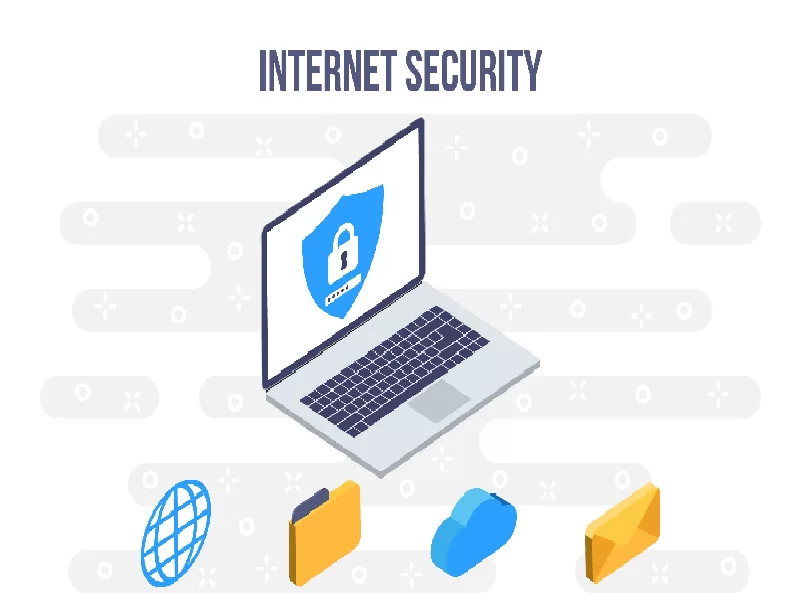- The blog provides a comprehensive checklist for enhancing internet security, covering essential practices like using strong passwords, enabling two-factor authentication (2FA), keeping software updated, and securing networks.
- It emphasizes proactive measures such as educating yourself on phishing, backing up data, using reliable security software, and safeguarding social media accounts to reduce vulnerability to cyber threats.
In an age where we rely on the internet for everything—from shopping to banking and even social interactions—securing our online presence is more critical than ever. Cybercriminals are always on the lookout for vulnerabilities to exploit, making it essential to ensure your digital defenses are strong. This ultimate checklist for internet security will help you assess your current practices, identify weaknesses, and implement the necessary changes to stay protected online.
Also read: Security, anonymity and stability: Why proxy servers are an increasingly popular internet tool
Also read: What is internet security?
1. Use strong and unique passwords
A secure password is your first line of defense against unauthorized access. Avoid using common passwords or personal information like your name or birthdate. Instead, create strong passwords that include:
- At least 12 characters.
- A mix of uppercase and lowercase letters, numbers, and special symbols.
- Unique passwords for every account.
To simplify password management, consider using a trusted password manager. These tools can securely store and generate complex passwords, reducing the temptation to reuse passwords across multiple accounts.
Also read: RIPE 89 talking points, from internet security to IPv6 adoption
2. Enable two-factor authentication (2FA)
Even the strongest password can be compromised, which is why two-factor authentication (2FA) is essential. 2FA adds an extra layer of protection by requiring a second form of verification, such as:
- A code sent to your phone or email.
- A fingerprint scan or facial recognition.
- Authentication apps like Google Authenticator or Authy.
Enabling 2FA on your most sensitive accounts, like banking and email, is a straightforward way to dramatically increase your security.
3. Keep your software and devices updated
Outdated software often contains security vulnerabilities that cybercriminals can exploit. Regular updates for your operating system, apps, and antivirus software are crucial to keeping your devices secure.
- Turn on automatic updates whenever possible.
- Regularly check for updates for less-obvious devices like routers and smart home gadgets.
4. Use a secure network
Public Wi-Fi networks are convenient but notoriously insecure. To protect your data:
- Avoid accessing sensitive accounts or making online purchases on public networks.
- Use a Virtual Private Network (VPN) to encrypt your internet connection.
- Always connect to networks with WPA3 or WPA2 encryption standards.
5. Be wary of phishing attempts
Phishing attacks trick users into revealing sensitive information through fake emails, websites, or messages. Protect yourself by:
- Double-checking the sender’s email address for unusual domains or typos.
- Avoiding clicking on links or downloading attachments from unknown sources.
- Looking for HTTPS in website URLs before entering personal information.
6. Secure your social media accounts
Social media can be a goldmine for cybercriminals looking for personal details. Safeguard your profiles by:
- Adjusting your privacy settings to control who can see your posts and information.
- Avoiding oversharing personal details like your address or vacation plans.
- Using strong passwords and enabling 2FA.
7. Backup your data regularly
Data loss from cyberattacks like ransomware can be devastating. Regular backups ensure you can recover your files without paying a ransom.
- Use cloud-based storage services with robust encryption.
- Keep an external hard drive backup for offline storage.
- Schedule automatic backups to avoid forgetting.
8. Install reliable security software
An effective antivirus or internet security suite provides real-time protection against malware, ransomware, and other threats. Look for security software that includes:
- Malware detection and removal.
- Firewall protection.
- Email and browser security features.
9. Educate yourself and others
Cybersecurity is an ongoing process that requires awareness and vigilance. Stay informed about the latest threats and educate others in your household or workplace. Simple steps include:
- Following reputable cybersecurity blogs and news outlets.
- Teaching family members to recognize phishing and other scams.
- Regularly reviewing and updating your security practices.

